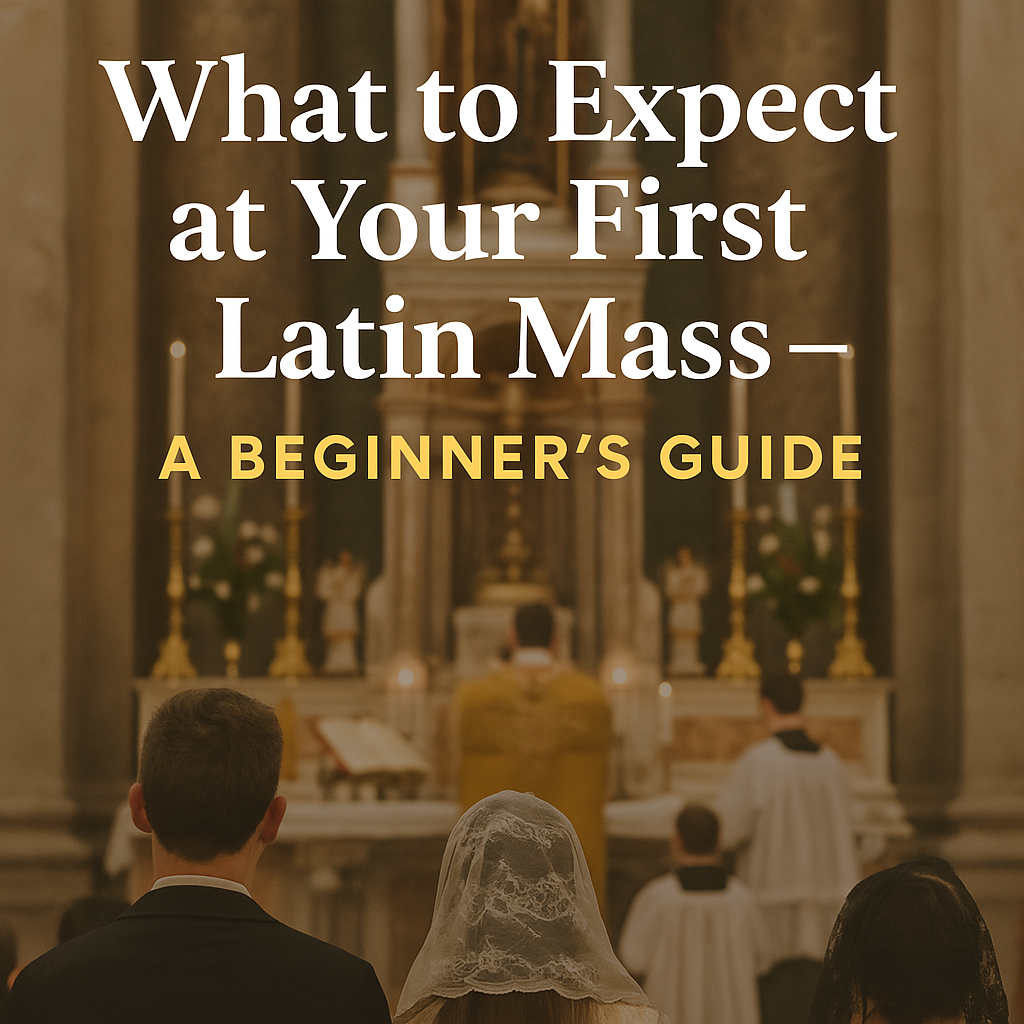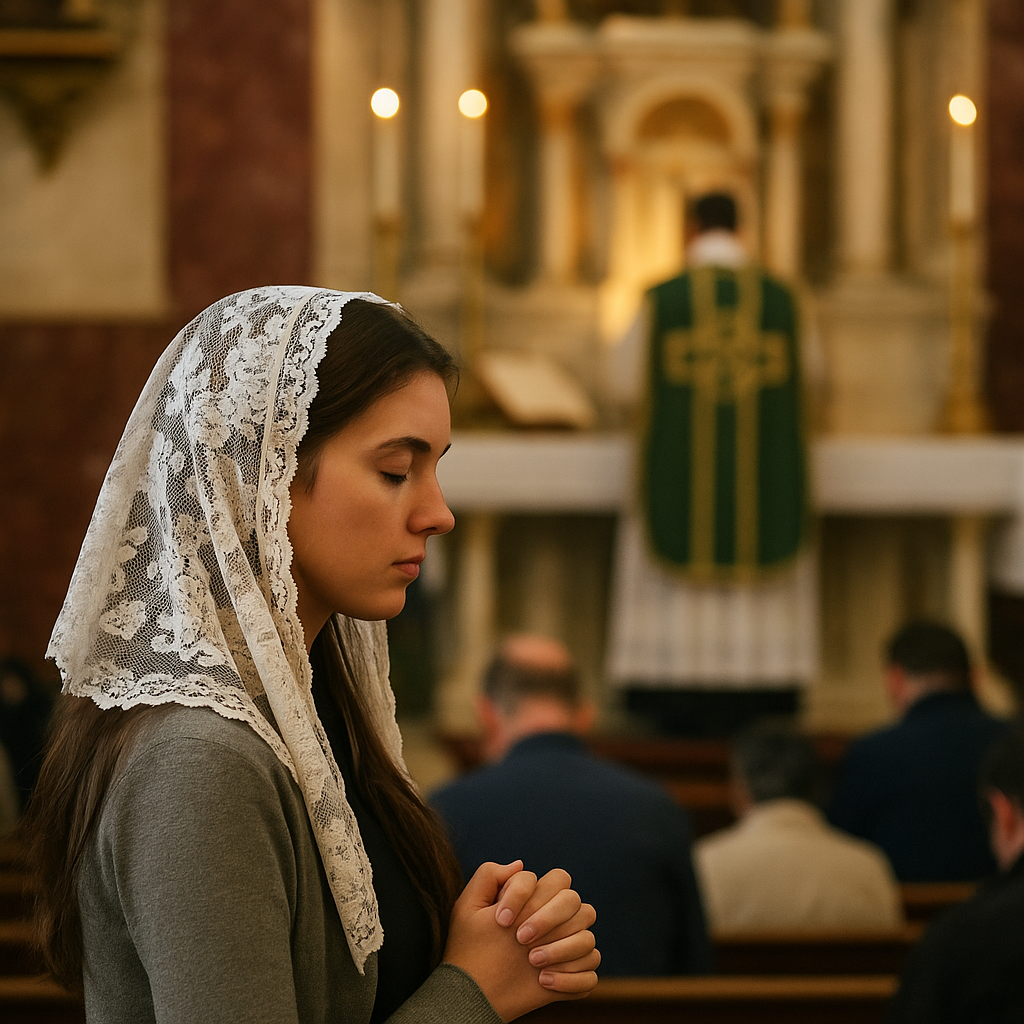First Time Attending Latin Mass? A Beginner’s Guide to the Sacred Tradition

If it's your first time attending Latin Mass, you might feel unsure of what to expect. In a sense, you have stepped into a different world—one rooted in tradition, silence, and mystery.
You walk into a church. It's quiet. Not the kind of quiet you hear in a library—but a deep, reverent stillness. The air smells of incense. A priest stands at the altar, facing the same direction as everyone else. Latin prayers rise into the air like ancient poetry. No one seems to be in a rush.
This guide is for you—the curious, the newcomer, the first-time Latin Mass attendee. Whether you’re exploring tradition for the first time or just stumbled into something you didn’t expect, this long-form guide will walk with you through the beauty, mystery, and rhythm of the Latin Mass.
First Time Attending Latin Mass - Here’s What It Actually Is
The Traditional Latin Mass, or TLM, is the form of the Catholic Mass celebrated according to the 1962 Roman Missal. It’s called "Latin" because the prayers and responses are in Latin. The priest faces the altar, not the people. And much of the Mass is quiet, contemplative, and reverent.
It’s also known as the Tridentine Mass, named after the Council of Trent, which standardized the Roman Rite in the 1500s. But its roots go much deeper, tracing back to the earliest centuries of Christianity. For over 1,500 years, this was the way Roman Catholics worshipped.
Why Does It Feel So Different?

If you're used to the Novus Ordo (the Mass most Catholics attend today), the Latin Mass might feel completely unfamiliar.
The priest faces the same direction as the congregation, symbolizing that he is leading us toward God. The language is Latin, a sacred and universal tongue. There’s a sense of stillness and mystery. People kneel more. They pray silently. There are fewer spoken responses. The music, if present, is often Gregorian chant. It’s not meant to entertain. It’s meant to elevate.
There’s no attempt to simplify or modernize. That’s what makes it so powerful.
What Should I Expect My First Time?
First of all: don’t worry if you don’t know what to do. Most people feel that way their first few times. It’s okay to observe quietly. Sit toward the back. Watch. Pray. Absorb.
Mass will likely begin without any announcement. The priest enters in silence. Many prayers are whispered or spoken softly, especially during the Eucharistic Prayer (called the Canon). You may not hear every word—and that’s okay.
You’ll notice moments of kneeling, silence, and solemn gestures. You might see women wearing veils and families dressed more formally. This isn’t about showing off or being old-fashioned. It’s about reverence for the Real Presence of Christ.
During Communion, people usually receive while kneeling at the altar rail and directly on the tongue. If you're not ready to receive, you can stay in your pew or cross your arms over your chest at the rail for a blessing.
What’s the Difference Between Low Mass and High Mass?
You may hear the terms "Low Mass" and "High Mass."
A Low Mass is quiet and spoken. There might not be any music. It’s perfect if you’re looking for a prayerful, focused experience.
A High Mass (sometimes called Missa Cantata) is more ceremonial. The priest sings parts of the Mass. There may be incense, chant, and a deeper sense of drama and solemnity. If you’re attending on a Sunday or major feast day, you’ll likely experience a High Mass.
Both forms are beautiful. Don’t worry about choosing the "right" one—just show up and let yourself be drawn in.
Do I Need to Know Latin?
Not at all.
Many first-timers don’t know a word of Latin. You don’t need to. Just follow the priest with your heart. You can bring a Latin-English missal or use an app like iMass or Laudate. Some churches offer booklets with translations.
The more you attend, the more familiar it becomes. You’ll start recognizing phrases and knowing where you are in the Mass. Over time, the Latin becomes less intimidating and more like a window into something eternal.
Why Do People Love the Latin Mass?
Many people who attend the Latin Mass describe it as a turning point in their spiritual life. It’s not because it’s old. It’s because it’s sacred.
The Latin Mass draws you into a rhythm that’s not about entertainment or personal expression. It’s about offering your heart to God. It’s about encountering the Eucharist with humility, wonder, and awe.
For first-timers, it can feel like rediscovering the soul of the Church.
Tips for Your First Visit
Try to arrive early. If it's your first time attending Latin Mass, take a few minutes to observe the atmosphere and settle your thoughts in prayer. Sit quietly and prepare your heart. Bring a missal or download a Latin Mass app if you can.
Don’t stress about following everything. Just be present. Sit quietly and prepare your heart in prayer. If you can, bring a missal or download a Latin Mass app. Don’t stress about following everything.
Dress modestly and reverently. It doesn’t mean you need to wear a suit or a veil (unless you want to), but consider what you might wear if you were meeting a king. Because in the Eucharist, you are.
And go more than once. The Latin Mass reveals itself slowly. Each visit uncovers more beauty, more depth.
Where to Find a Latin Mass
If you want to try the Latin Mass, you can visit latinmassdir.org to find a parish near you. Many dioceses also list them on their websites. Look for communities served by the Priestly Fraternity of St. Peter (FSSP), Institute of Christ the King Sovereign Priest (ICKSP), or local diocesan priests trained in the 1962 Missal.
Even if you don’t know what to do, especially if it's your first time attending Latin Mass, just go. God will meet you there.
Final Words for First-Timers
Going to your first Latin Mass might feel unfamiliar, but that’s what makes it powerful. In that unfamiliarity, something ancient, beautiful, and divine breaks through.
You don’t have to understand it all. You just have to show up, open your heart, and let God do the rest.
The Latin Mass has nourished saints and mystics for centuries. Now it’s waiting for you. Come and see.
New! Comments
Have your say about what you just read! Leave me a comment in the box below.